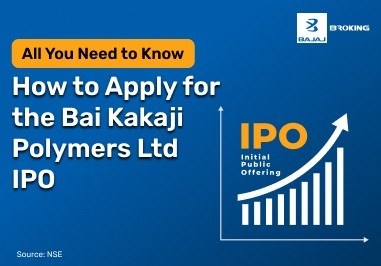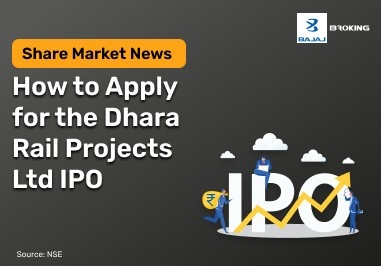I remember the first time I heard someone use the word "venture capital." It sounded like something only people who work on Wall Street would get. But in reality, it's not that hard. Venture capital is basically money that investors provide to new enterprises that seem like they could grow quickly. For a lot of new businesses, it is the link between a concept on paper and a product that works in the real world.
The issue with venture capital is that it's not simply about giving someone a cheque. It's more like a partnership. Yes, investors give money, but they also give counsel, make connections, and occasionally even tell you the truth. They get a slice of the company's stock in return. The bet is risky, but if the business does well, both sides profit.
Let's take this apart slowly. What it implies, how it works, why it's important, and even when it might not be the great choice.
What is Venture Capital?
Think of venture capital as gas. Startups need it to get going, but it's expensive fuel, and the supplier wants a share of the business in return. When you get a loan from a bank, you pay interest and keep complete control. Here, the investor becomes a partner.
Why would anyone do this? Because the benefits are great. If the startup does well, that little investment may be worth a lot more. This is why you typically see venture capital in industries that move quickly, like tech, where new apps, finance tools, or even AI products are made. The chance of getting a good return is also high, but so is the risk.
How Does Venture Capital Work?
I prefer to think of this as a dance between investors and founders. It usually goes like this:
How to Pitch to Investors: The startup tells its tale, shows the data, and talks about its dream.
Due Diligence: Investors then look at everything, from the team's history to the business model.
Investment Agreement: Both sides agree on the amount of money and the percentage of ownership.
Active Involvement: Many venture capitalists don't just sit back and watch. They give counsel, open doors, and occasionally push hard for results.
Exit Strategy: Investors want to receive their money back at some point, like when the company goes public or is bought.
It is not a fast game. These investments can last for years.
Importance of Venture Capital
What is the big deal about venture capital? Well, that's only one part of the agreement.
Advice from experts: Investors frequently know a lot about the sector. They can tell you about blunders that other people have previously made.
Networking: A strong VC company may help a business find partners, consumers, or even the next group of investors.
Credibility: People pay attention when a well-known investor supports you.
Shared Risk: Investors and founders both take on some of the risk.
Mentorship: Some investors really assist shape plans, not just give money.
Faster Scaling: Startups can employ people, do more research, or launch faster with money.
Focus on Innovation: With capital, teams can keep making their goods better instead of only worrying about staying alive.
Additional Read: What is Demat Account: Importance, Features and Types
Features of Venture Capital
There are a few things that make venture capital different from other types of funding:
High Risk, High Reward: Many new businesses fail, but the few that do well make up for it.
Long-Term Nature: Investors usually stay for a long time.
Staged Funding: Money normally comes in stages, such as seed money, Series A, Series B, and so forth.
Focus on New Ideas: They support new ideas, not ones that are just copies of others.
Exit Goal: Investors usually want to make money by selling their shares or getting bought out.
Types of Venture Capital
Different parts of a startup need different kinds of help. Here's a simple chart:
Funding for seeds: Getting money early to work on a product idea, do research, or make a plan. A lot of the time, they come from founders or close friends.
Money for a new business: It comes after the seed. Helps make prototypes, hire people, and get things going.
Series A (First Stage): For businesses that already have a product and want to make it, promote it, and grow it.
Funding for Growth: Used to get into new markets or add more products to existing ones.
Funding at the End: For businesses that are already stable but want to develop or leave.
Bridge Funding: Short-term money to handle expenses before going public or being bought.
When Should One Go for Venture Capital Funding?
A venture capitalist can be a person, a business, or even a company that invests. What do they do? Find potential enterprises to invest in, and then leave with a profit. They are okay with risk, but only if there is a real chance of progress. So, when should you look for venture capital? Some businesses don't need VC money. But there are situations when it makes sense:
Expansion Stage: When the firm is developing quickly but needs additional resources.
Mentoring Needs: When money isn't as important as help and connections.
Competitive Markets: If you need to get ahead of your competitors rapidly, speed is important.
Pros and Cons of Venture Capital
Pros:
Cons:
Founders lose some control.
A lot of stress to grow swiftly.
Funding rounds make ownership less clear.
Plans for investors to leave may not necessarily fit with the long-term objective.
Examples of Investments in Venture Capital
Seeing genuine tales can help sometimes:
Sequoia Capital put about ₹2 lakh into Apple in 1978. That cooperation made it possible for Apple to release its first big hit, the Apple II.
In 1998, Google got its first angel investment of ₹8 lakh and then ₹2 crore from prominent VCs. This helped it develop.
Facebook: In 2005, Accel Partners put ₹95 crore into the company, which helped it grow outside campuses.
Amazon: A Series It got roughly ₹6 crore in finance in 1995, which enabled it to go beyond books.
Uber got ₹8 crore from Benchmark Capital in 2011 to go into additional locations.
In 2013, Coinbase raised ₹20 crore in a Series B financing round, which helped it grow into a leading crypto exchange.
Alternatives to Venture Capital Funding
Here are some other choices:
Bootstrapping means using your own funds or the money your firm makes.
Angel Investors: People who put in less money than VCs.
Crowdfunding: Getting money from the public through websites.
Loans from banks are common, but they need to be paid back and occasionally require collateral.
Financing based on revenue means giving up a part of future income.
ICOs are ways for blockchain firms to raise money by selling tokens.
Grants are money that the government or other organisations provide you with that you don't have to pay back.
Peer-to-peer lending means borrowing money directly from people online.
Conclusion
Venture capital is one of those things that seems great from the outside but has its downsides. It gives you money, credibility, and contacts, but it also puts pressure on you, spreads you out, and gives you less control.
The real trick for founders is determining when it matches their journey. Finding the appropriate investor can help a firm move forward, but sometimes it's better to say no.














